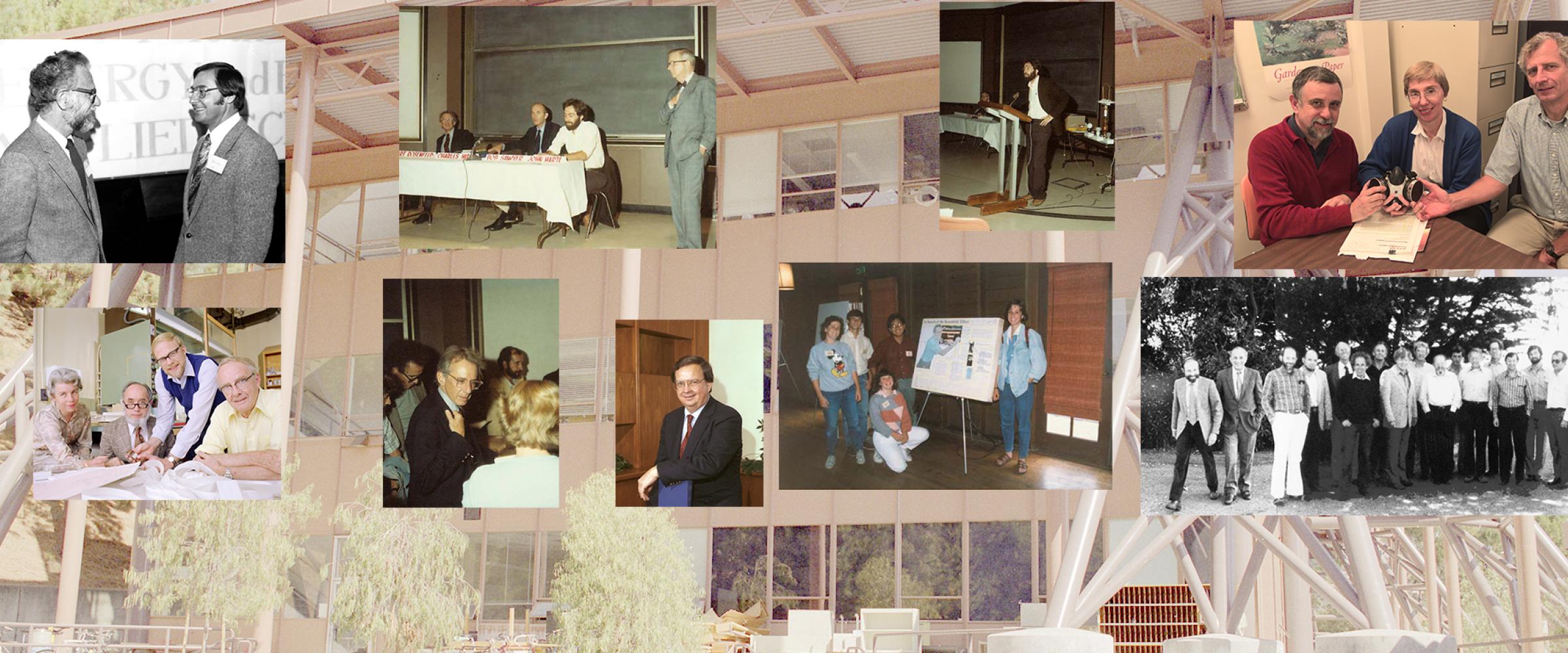
The 1980s
The 1980s saw big changes at the Applied Sciences Division, (Energy & Environment name chnaged in 1983), the laboratory as a whole, and the nation.
David Shirley was appointed as Lab Director—the first chemist to direct Berkeley Lab. Shirley’s first success came in 1982 when the U.S. Department of Energy approved an initiative called the Center for Advanced Materials. This research was aimed at solving "stopper problems" in materials science that were blocking technological developments.
The Applied Science division contributed to astroid impact theory, helped to found the American Council for an Energy Efficient Economy, and then faced significant budget cuts throughout the decade as the Reagan administration dismantled many environmental programs.
January 2 - Bill Fisk, air quality expert, is hired
Fisk's ground-breaking work in indoor air quality becomes a national standard.
American Council for an Energy Efficient Economy founded
Rosenfeld, Jack Hollander, among others found the American Council for an Energy Efficient Economy
That year and Beyond
Free software became widely available to researchers and the public, starting with window energy-efficiency tools.
Researchers pioneer a new generation of advanced battery technology, develop compact fluorescent lamp torchieres, and launch appliance standards work in China — the world’s largest market for energy-efficiency opportunities.
DOE-2 energy analysis software program becomes the standard tool for building energy simulation modeling, the harbinger of a boom in building energy-efficiency software that continues today.
 That year - David Shirley becomes Laboratory director
That year - David Shirley becomes Laboratory director
David Shirley is named director of the Lab, the first time a chemist rather than a physicist was chosen to be director.
June 6 - Asteroid impact theory of the extinction of dinosaurs published
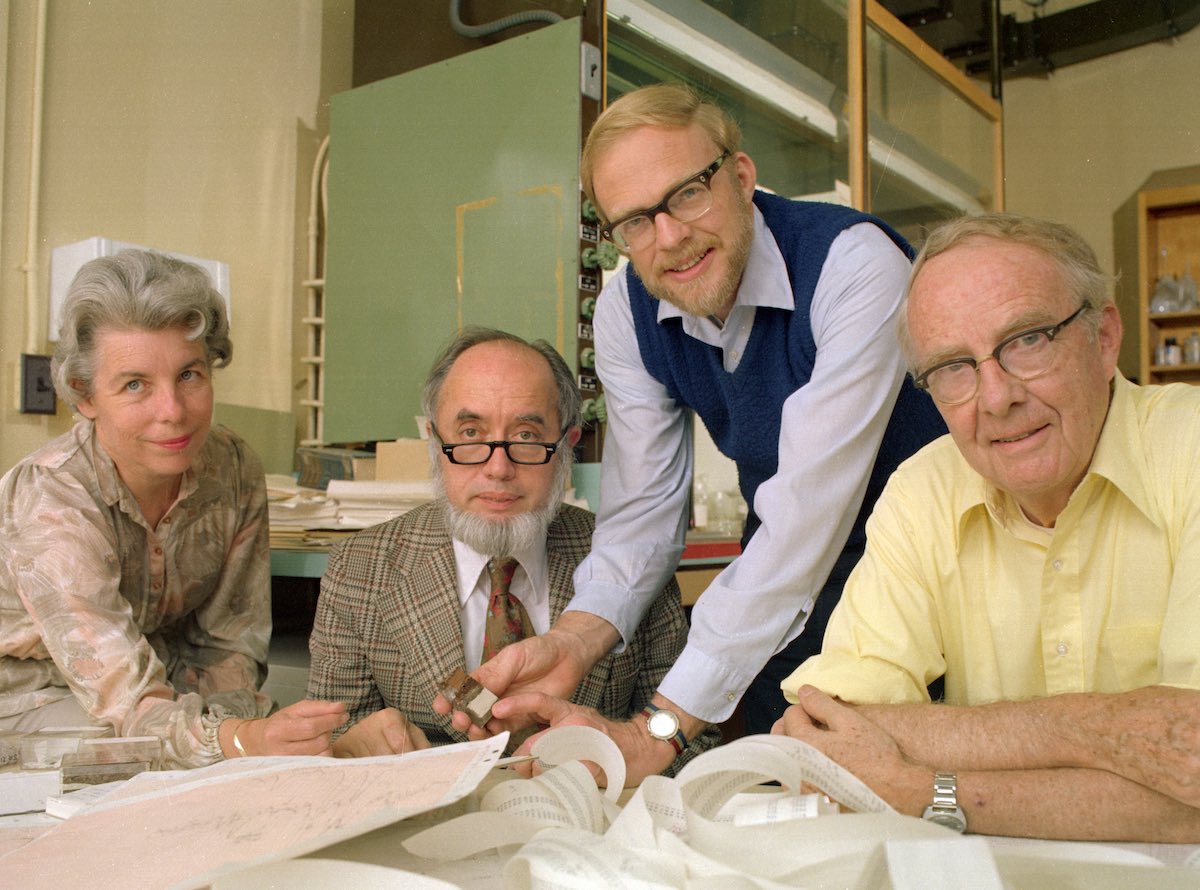 University of California-Berkeley and Berkeley Lab physicist Luis Alvarez; Luis' son Walter, a University of California-Berkeley geologist; and Energy and Environment's Frank Asaro and Helen Michel publish the asteroid impact theory of the extinction of dinosaurs 65 million years ago. Michel is pictured, at left, in 1969 with Asaro, Walter Alvarez, and Luis Alvarez (l-r).
University of California-Berkeley and Berkeley Lab physicist Luis Alvarez; Luis' son Walter, a University of California-Berkeley geologist; and Energy and Environment's Frank Asaro and Helen Michel publish the asteroid impact theory of the extinction of dinosaurs 65 million years ago. Michel is pictured, at left, in 1969 with Asaro, Walter Alvarez, and Luis Alvarez (l-r).
August - First biennial Summer Study on energy efficiency in buildings
First American Council for an Energy Efficient Economy summer study on buildings, indicating a growing awareness and focus on energy efficiency in buildings.
October - Barbara West steps down
Barbara West steps down as as administrator of the Energy and Environment Division.
November 4 - Ronald Reagan is elected president
Ronald Reagan is elected president, with campaign vows to eliminate the U.S. Department of Energy.
That Year - Aethalometer Created
The aethalometer, which measures the vertical distribution of soot particles produced by coal and oil combustion in the atmosphere, is created. The device reveals layers of soot above the arctic ice cap in concentrations comparable to those above urban areas.
Winter - First issue of Energy and Environment Newsletter
The first known edition of the Energy and Environment Newsletter was published, chronicling division activities and related events.
End of Year - Energy and Environment Division growing in size
The Lawrence Berkeley Laboratory annual report shows that the Energy and Environment Division has 489 staff, not including the division office.
Reagan begins to dismantle the energy programs that Carter had built up with the emphasis now on high-risk, high-payoff research.
January 23 - James Edwards to "extract" the U.S. Department of Energy
James Edwards, a dentist, is appointed U.S. Secretary of Energy with the mandate to "extract" the Department of Energy from federal government.
March 16 - Mark Alper appointed division administrator
Mark Alper is appointed division administrator following a search.
That year - Most solar projects terminated
Most solar energy projects lose funding and are terminated.
Fall - Grether appointed deputy division head
Don Grether is appointed deputy division head of the Energy and Environment Division.
October 1 - Lab celebrates 50th Anniversary
Berkeley Lab celebrates its 50th anniversary. Energy and Environment Division sponsors a symposium at Lawrence Hall of Science that is moderated by Charles Hitch (former University of California President). Speakers include (pictured at left, seated, with Hitch standing) Rosenfeld (energy efficiency), Bob Sawyer (autos, also pictured at right), John Harte (environment).

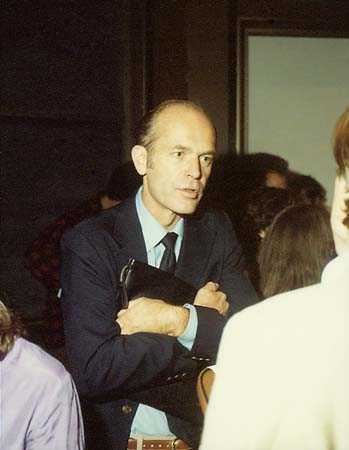
November - Will Siri retires, Mark Levine is appointed
Will Siri retires as leader of the Energy Analysis program. Mark Levine is appointed as the acting leader.
That year - history of Lab's first 50 years released
Three historians describe the Lab's first 50 years: Lawrence and His Laboratory. Grether's commentary on the book gives the big picture for the first 50 years.
Changes for Indoor Environment and Energy Analysis.
February - Work starts on the Energy and Environment strategic plan
A memo from Elton Cairns launches the effort to develop the division's first strategic plan.
April - Draft strategic plan published
Draft of strategic plan available for review.
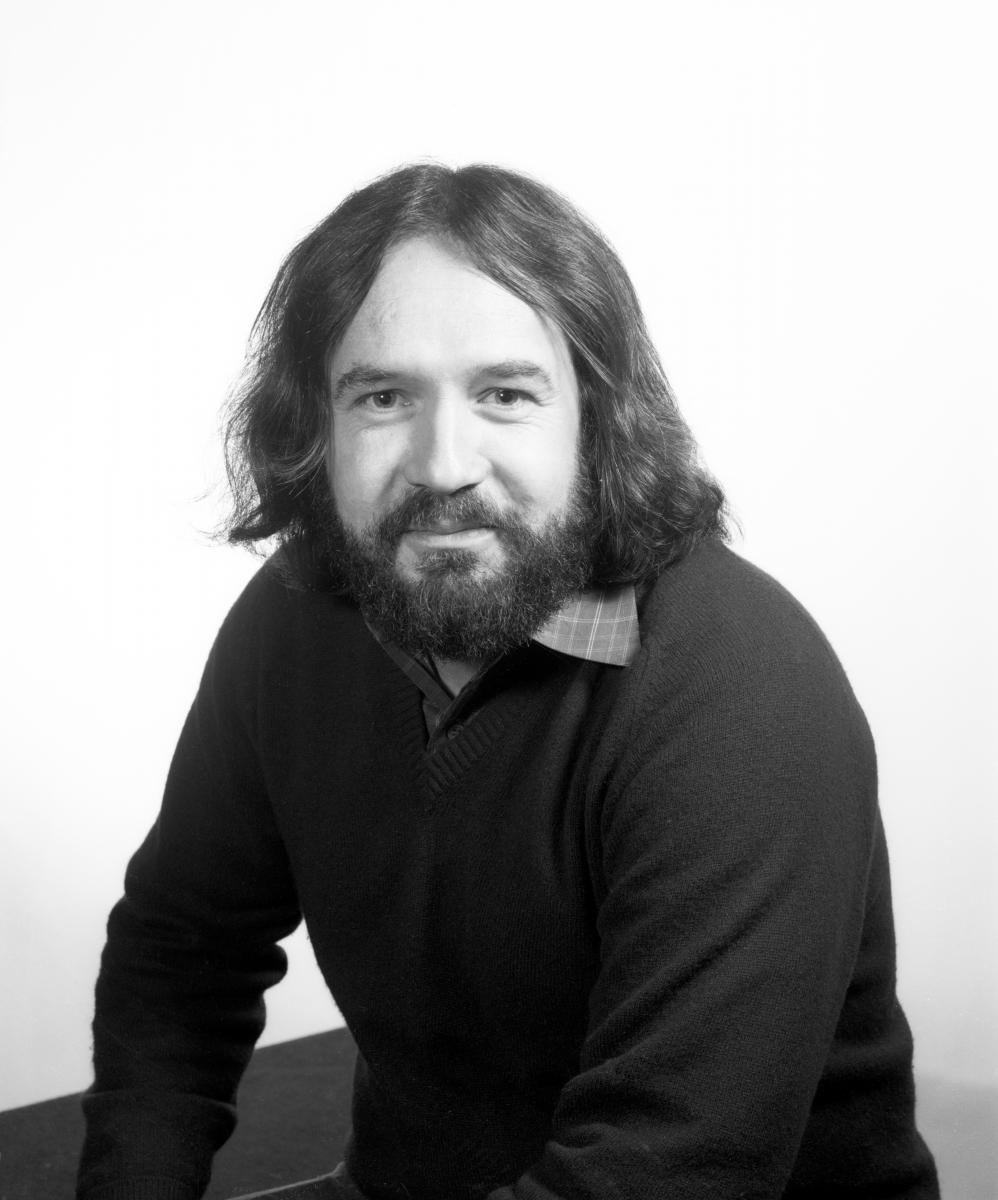 July - Craig Hollowell dies of heart attack
July - Craig Hollowell dies of heart attack
Craig Hollowell (pictured), founder of the Indoor Air Quality effort, dies from a heart attack at 41. Dave Grimsrud takes over leadership.
October - Craig Hollowell Lecture Series is established
Elton Cairns establishes the Craig Hollowell Lecture Series. As originally envisioned, the lectures would be given by division scientists.
November - Mike Rothkopf appointed to lead Energy Analysis Program
Mike Rothkopf is hired as the leader of the Energy Analysis Program after a national search.
November - Donald Hodel is appointed secretary of energy
End of Year - division staff down by about 100
Annual report shows that the division has 398 staff including the division office. A loss of about 100 from 1980.
Radon Risk, Selenium Contamination
Researchers identify the risks of radon, a radioactive gas that can seep into homes from the soil. Meanwhile, selenium contamination from irrigation drainage is identified as the reason wild birds are being poisoned to death at the Kesterson Reservoir in the San Joaquin Valley.
March - Hollowell series opens up
Via a revised memo, Elton Cairns extends the Craig Hollowell Lecture Series to those outside the division. In practice, the lectures were alternatively given by inside and outside speakers.
July - Energy and Environment becomes Applied Science Division
Lab Director David Shirley changes division name to Applied Science Division. Elton Cairns is appointed to a second five-year term as division head.
August - Rollie Otto steps down
Rollie Otto steps down as assistant division director to return full time to research.
October - Rick Russo is hired
October - Jan Stowijk gives first Hollowell Lecture
The first Hollowell Lecture was given by Jan A. J. Stolwijk, Yale, on "Indoor Air Pollution: Exposure and Health Effects."
November - division celebrates 10th anniversary
The division celebrates its 10th anniversary with a reception in the Cafeteria. Speakers included Ed McMillan, Jack Hollander, Will Siri, Rosenfeld, David Shirley, and Elton Cairns.
The first photo is of Hollander and Cairns. The second photo is of Hollander, Lee Schipper, Maya Osowitt, and Will Siri.
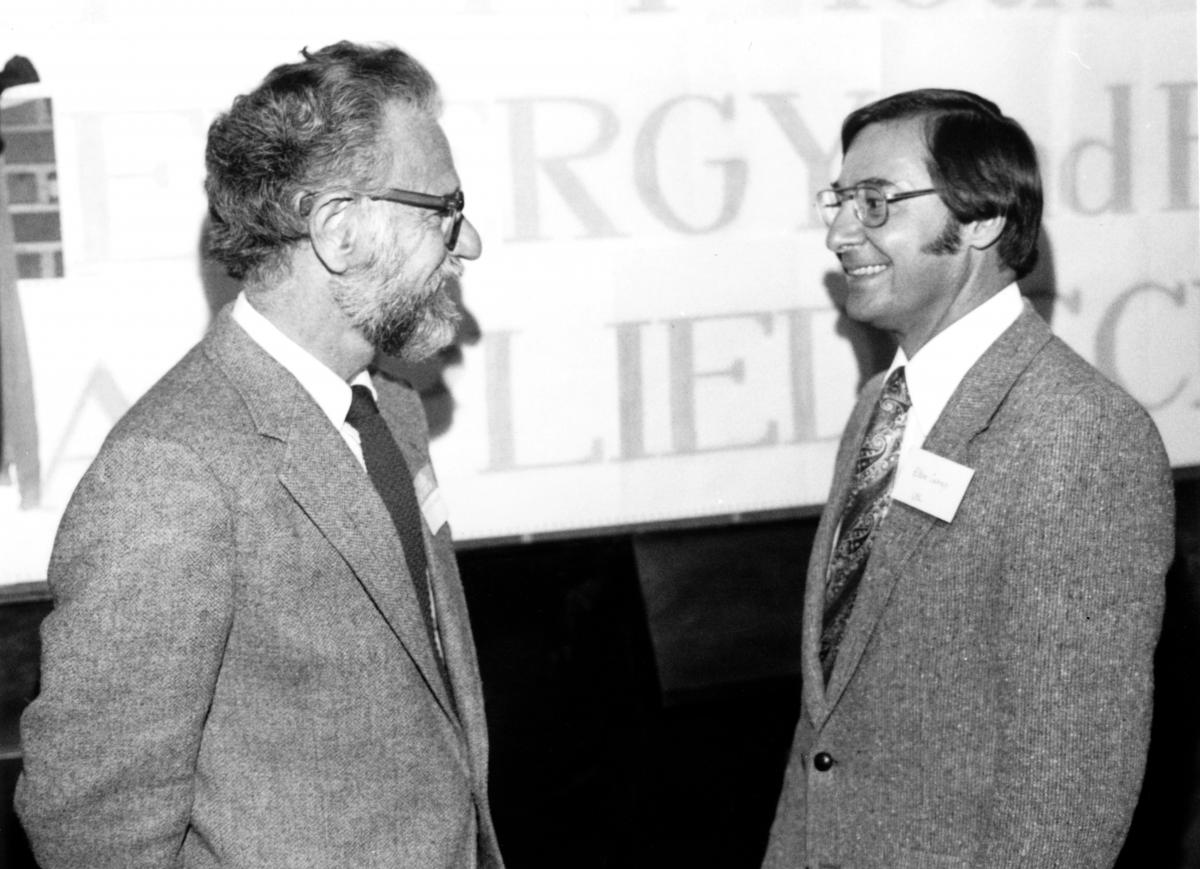
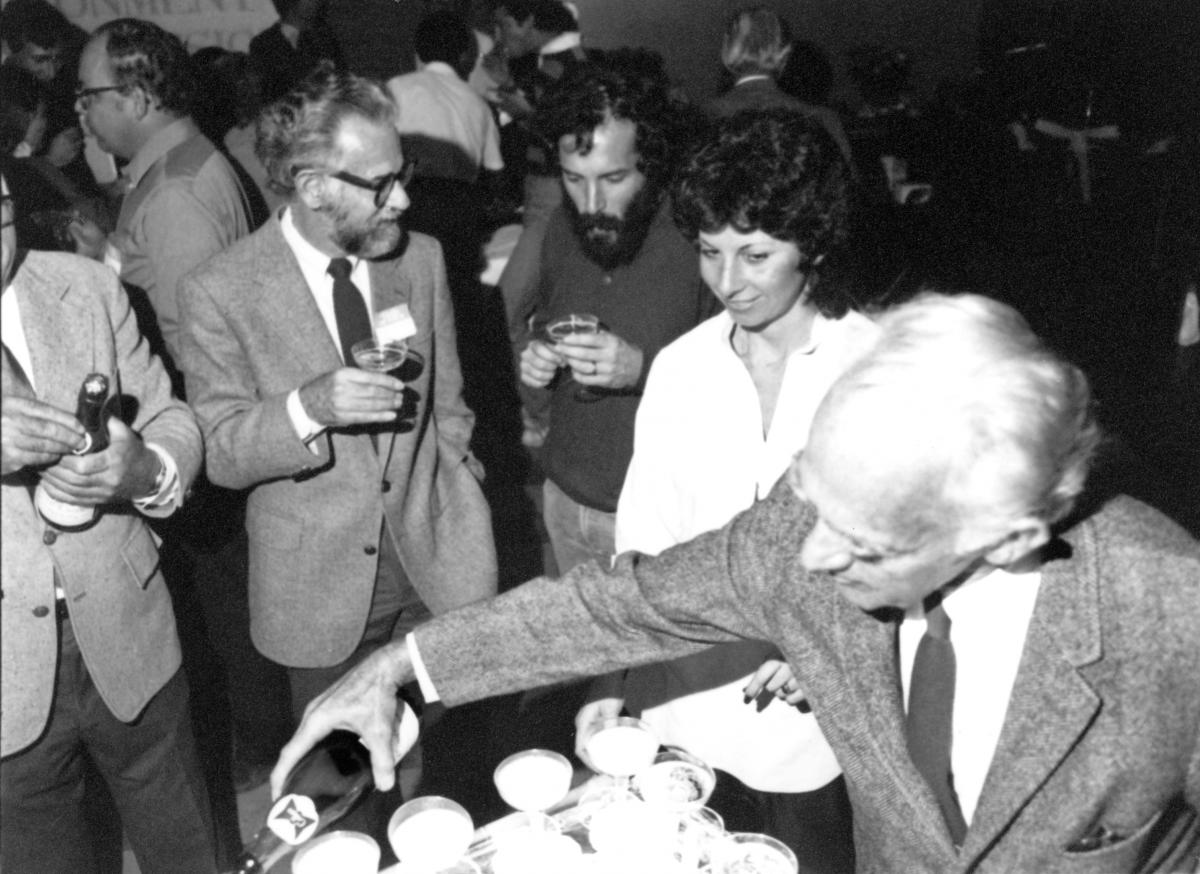
Late in year - Alex Quintanilla is appointed interim assistant division head
Orwell novel 1984 does not come true. Apple Macintosh is introduced during the Super Bowl.
Cool Roofs Research
Rosenfeld kicks off research on the benefits of cool roofs for energy savings and reducing summer urban temperatures, ultimately proving enormous benefits and inspiring guidelines for city planners and policymakers.
Alex Quintanilla appointed assistant division director
February - The Applied Science Division has 60 term appointees
Don Grether's memo to Director Shirley states that the Applied Science Division has 60 term appointees. The large number was due to severe budget uncertainties in earlier years.
Early - Mark Alper leaves for the Center for Advanced Materials
Mark Alper leaves for a comparable division administrator position in the new Center for Advanced Materials.
June - First division leadership retreat
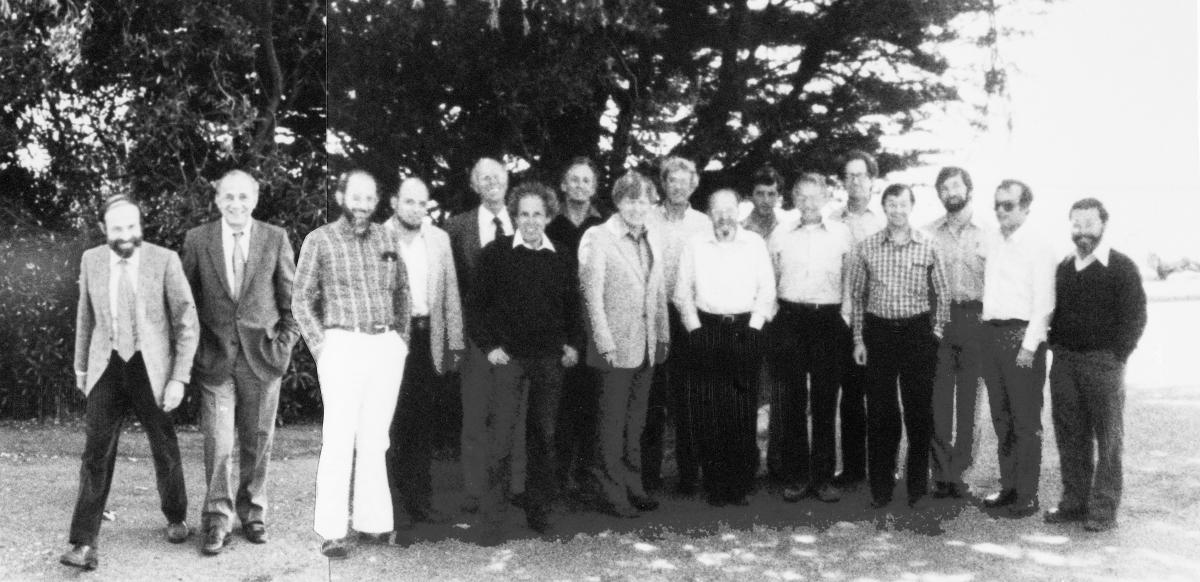 First retreat of the senior leadership of the division is held at H's Lordships. The major topics were organization, new research directions, and recognition of scientists.
First retreat of the senior leadership of the division is held at H's Lordships. The major topics were organization, new research directions, and recognition of scientists.
July 13 - Advisory Committee forms to reorganize division
Elton Cairns appoints an advisory committee to recommend an organizational structure. Co-chairs are Nabil Amer and Frank Robben. Don Grether represents the division office.
August 29 - David Emery becomes division administrator following search
November 6 - Ronald Reagan elected to second term as president
November 21 - Draft of professional staff procedures document
A draft of the professional staff procedures document is developed. This document supersedes earlier documents on this subject.
Fall - Superconducting Super Collider Central Design Group moves, leaving behind building improvements in Building 90
Superconducting Super Collider Central Design Group moves onto the 4th floor of Building 90, displacing Engineering and Technical Services Staff. Conference rooms are built and A/C is installed.
February - John Herrington appointed U.S. secretary of energy
May - Advisory committee on organization reports out
June - David Emery leaves Lab
Dave Emery leaves to take a position in a private sector company in Colorado.
August - Cheryl Fragiadakis is division administrator
Cheryl Fragiadakis is appointed division administrator, coming from Exxon.
December - Elton Cairns outlines proposed reorganization
Cairns sends a memo outlining proposed re-organization. He retains line management structure with program leaders reporting to division head, but proposes changes in the mix of programs. Also proposed are the Center for Building Science and the Center for Atmospheric and Biospheric Effects of Combustion.
End of Year - Division up to 476 staff
From the annual report: the programs (and leaders) are Chemical Processes Research and Development (Elton Cairns), Solar Energy (Mike Wahlig), Energy Efficient Buildings (Art Rosenfeld, acting), Environmental Research (Tica Novakov), and Energy Analysis (Mike Rothkopf). Division has 476 staff.
Joan Daisey is Hired
Joan Daisey joins the Indoor Air Quality Group and leads groundbreaking research that proves indoor levels of many pollutants far exceed corresponding outdoor levels. Researchers begin to consider indoor air quality when assessing pollutant exposures and health risks. Daisey’s leadership connects the indoor and outdoor air research communities.
March - Division is reorganized
Programs (and leaders) are Energy Conversion and Storage (Elton Cairns), Environmental Research (Tica Novakov), Energy Analysis (Mark Levine), Building Energy Systems (Mike Wahlig), Windows and Lighting (Steve Selkowitz), and Indoor Environment (Dave Grimsrud). Art Rosenfeld is appointed director of the Center for Building Science.

March - Center for Building Sciences is established
The Center for Building Sciences coordinates research across the four buildings-related member programs. The leaders, plus Rosenfeld, Grether, and Mike Rothkopf, constitute the Center Executive Committee.
Throughout year - Center for Building Sciences pushes for California Institute for Energy Efficiency
A major Center for Building Sciences activity is to establish the California Institute for Energy
Efficiency, recognizing the scope and importance of the state’s energy efficiency policies and
programs, and providing potential complementary financial support to DOE-funded programs.
Regular participants on the organizing committee are Rosenfeld, Jeff Harris, Levine,
Grether, Carl Blumstein, and Charles Hitch (former University of California President).
May - Second division leadership retreat
The retreat was held at St. Mary's College in Moraga. Theme was "Future Directions of the Division."
August - U.S. Department of Energy endorsement of the California Institute for Energy Efficiency
A letter to Rosenfeld from Alan Streb, Deputy Assistant Secretary for Conservation and Renewable Energy, is taken as an endorsement of the concept by the U.S. Department of Energy.
End of Year - Division down to 383 staff
From annual report: division has 383 staff, down from 476 in 1985.
Landmark Appliance-Efficiency Research
Berkeley Lab supports the first-ever national appliance-efficiency standards (for refrigerators) for DOE. The program grows to include all appliances, and expertise is shared worldwide, eventually leading to more than $1 trillion in annual savings worldwide due to appliance energy-efficiency standards.
March - Continued budget cuts
The center executive committee reviews the Center for Building Sciences and gives high marks in difficult financial times for several of the member programs. Unexpected cuts by Congress in the energy efficiency budget made 1986 bad and 1987 is worse.
October - Lab reorganized
Lab is reorganized with the introduction of associate laboratory directors for the research divisions.
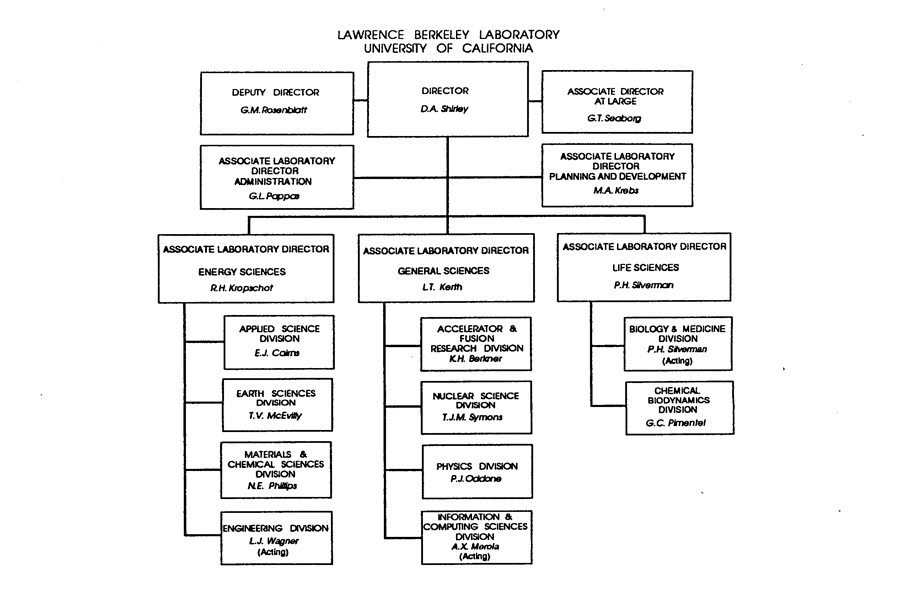
Alex Quintanilla is appointed director of the Center for the Atmospheric and Biospheric Effects of Technology
End of Year - Division staff down to 340
From annual report: division has 340 staff, down from 476 in 1985 and 383 in 1986.
China Energy Group Created
The China Energy Group is formed, kicking off an international effort to share energy-efficiency research with other countries. The effort soon spreads to other nations, including India, and eventually results in creation of the International Energy Analysis Department.
Early - Origin of California Institute of Energy Efficiency
Rosenfeld and others envision a California Institute of Energy Efficiency that would be funded by California energy utilities and allocate "pooled" funding for projects at California universities and federal labs located in California, eventually becoming the California Institute for Energy and the Environment at UC Berkeley.
May - University of California establishes California Institute of Energy Efficiency on Lawrence Berkeley Laboratory "campus"
Letter to Director Shirley from William Frazer, University of California Senior Vice President for Academic Affairs, establishes the California Institute of Energy Efficiency as an organized research unit on the Laboratory "campus," and as a branch of the University-wide Energy Research Group, now the University of California Energy Institute. Art Rosenfeld is the acting director.
August - "Rosenfeld Effect" unveiled
The "Rosenfeld Effect" is unveiled at the 1988 American Council for an Energy Efficient Economy Summer Study.
November - George H. W. Bush elected president
November - Energy Analysis takes over Building 90 - 4th floor
Waxahachie, Texas, is selected as site for the Superconducting Super Collider, and its central design group soon thereafter moves to Texas. The Energy Analysis Program takes over the 4th floor of Building 90.
That year - Joan Daisey is Indoor Environment head
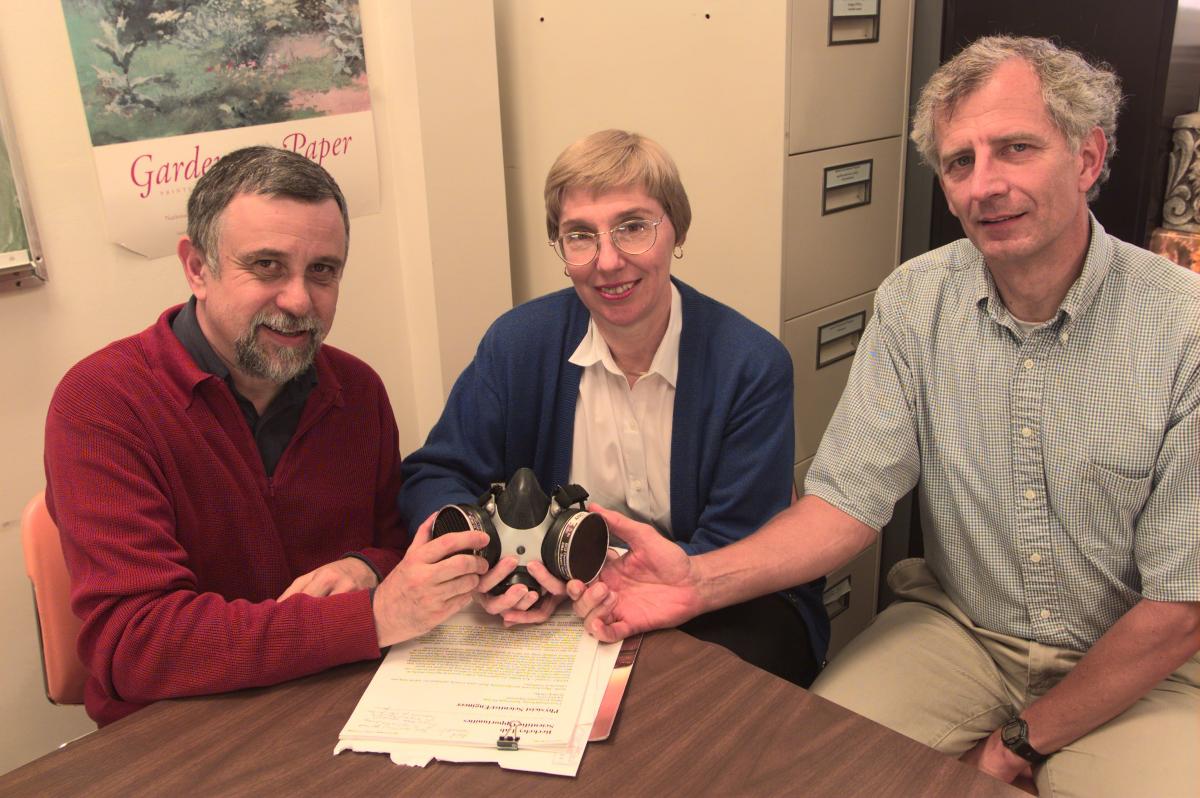 Daisey is appointed leader of the Indoor Environment Program, replacing Dave Grimsrud, who left the Lab.
Daisey is appointed leader of the Indoor Environment Program, replacing Dave Grimsrud, who left the Lab.
Pictured, left to right: Helmut Feustel, Daisey, and Rich Sextro.
1989 is a period of relative stability and some growth in energy technology research and development.
March - James Watkins is appointed U.S. secretary of energy
Early - Applied Science Division faces possible disaster
J. Michael Davis is confirmed as U.S. Department of Energy Assistant Secretary for Conservation and Renewable Energy, leading to a near disaster for the division in that he proposed to fund only four core Labs (not including Berkeley Lab). Some behind-the-scenes political actions squelched the proposal.
Advanced Battery Consortium is established
The Bush administration establishes the U.S. Advanced Battery Consortium in conjunction with the U.S. auto companies and the Electric Power Research Institute. The expectation was that electric vehicles would replace conventional vehicles.
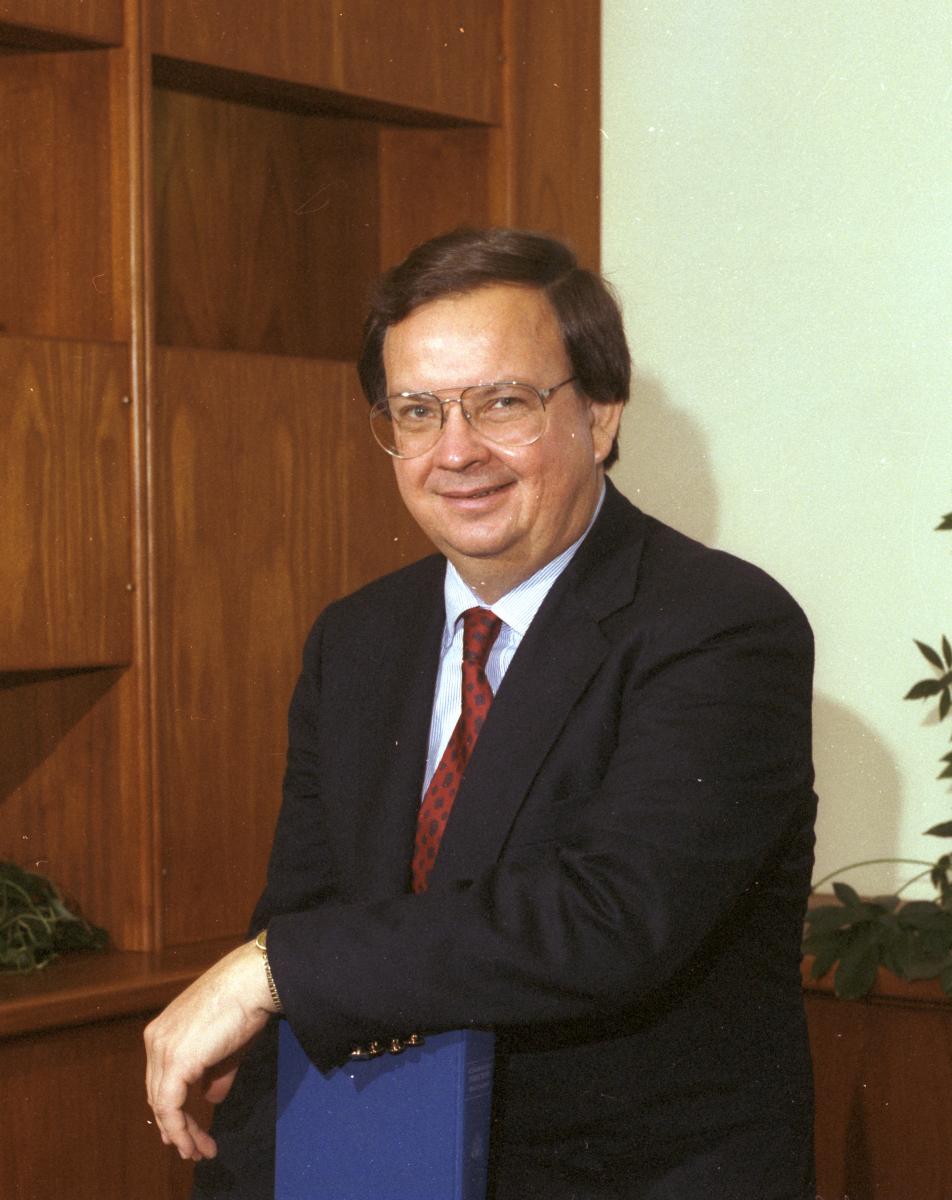 September - Charles Shank replaces David Shirley as Lab director
September - Charles Shank replaces David Shirley as Lab director
December - Lab and division organizational charts



